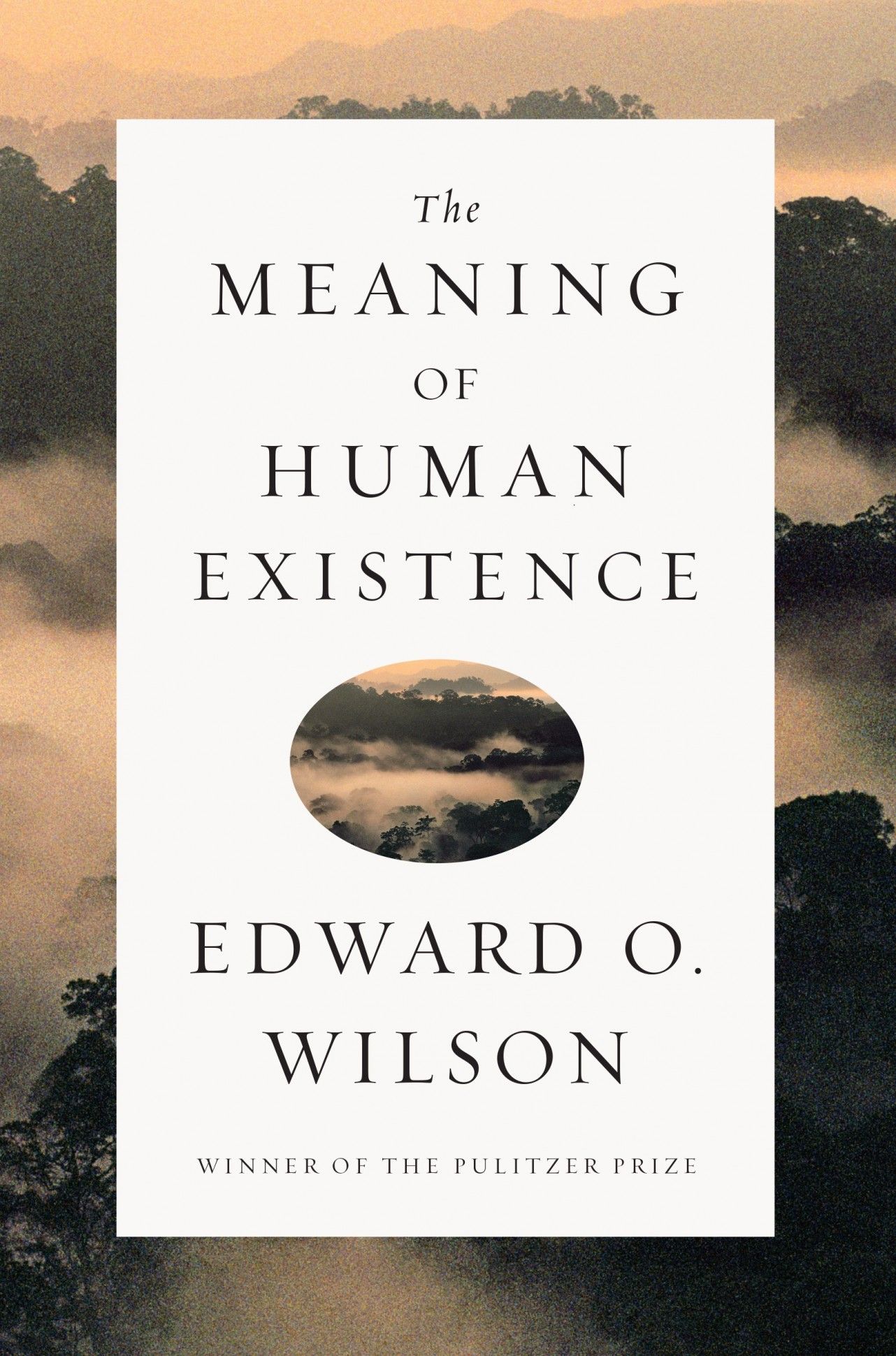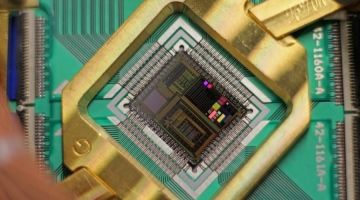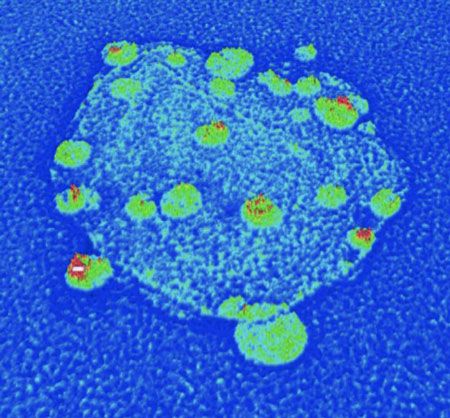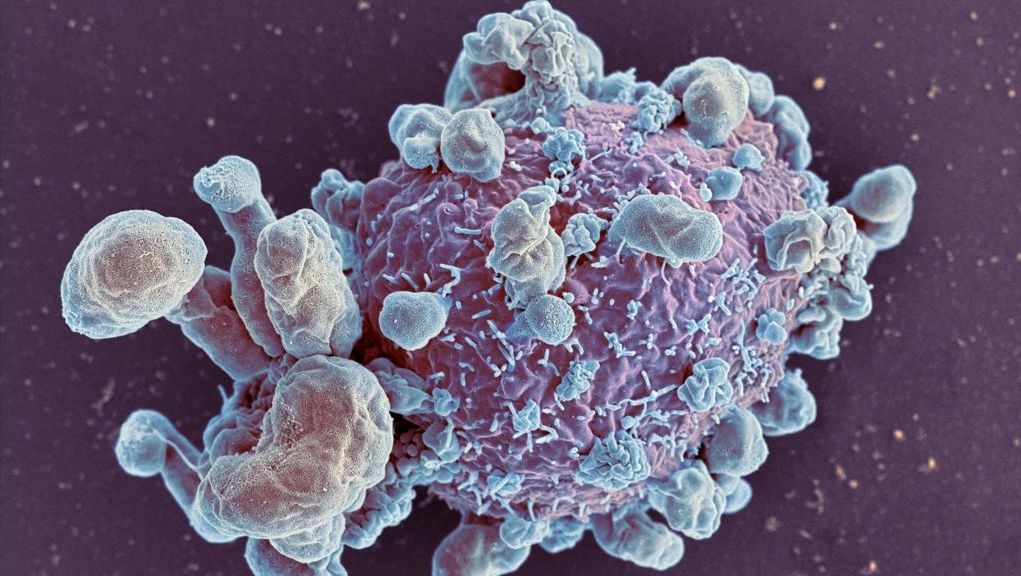According to Einstein’s theory of general relativity (GR), black holes are ferocious beasts able to swallow and destroy everything within their reach. Their strong gravitational pull deforms the space-time causal structure in such a way that nothing can get out of them once their event horizon is crossed. The fate of those incautious observers curious enough to cross this border is to suffer a painful spaghettification process due to the strong tidal forces before being destroyed at the center of the black hole.
Page 11070
Jun 8, 2016
E.O. Wilson Chases The ‘Great Riddle’ Of Human Existence
Posted by Bruce Dorminey in categories: cosmology, neuroscience
For those who missed my 2014 review of E.O. Wilson’s book, “The Meaning of Human Existence.”
With a title as audacious as “The Meaning of Human Existence,” even a casual reader couldn’t be faulted for expecting a veritable Rosetta Stone to the cosmos and life as we know it. But in his latest book, Edward O. Wilson offers no philosophically-satisfying answers to this age-old “existence” question. And maybe that’s his point.
After all, the ability to ponder our own existence is at once a blessing and a curse. Neither sharks nor swallows seem to worry about too much more than their next meal. Yet in fifteen chapters, Wilson — a renowned biologist, naturalist, author and Harvard University professor emeritus, strips humanity of its soul.
Continue reading “E.O. Wilson Chases The ‘Great Riddle’ Of Human Existence” »
I have fond memories of both of my grandfathers as a boy growing up in the American Southwest. My mother’s father was a master gardener, able to grow plants in an arid environment that should have thrived only in tropical rainforests. Botanists from the Department of Biology at the local university surveyed his garden, and promptly asked him to help with problems they were experiencing in their greenhouses. There were large fruit trees scattered throughout his backyard perfect for climbing and eating apples, peaches, or cherries fresh off the branch. The foliage of these trees was dense, making it possible to hide and pounce down on unsuspecting younger brothers or cousins wandering too near the danger zone. Not saying I ever did such a thing, just saying it was possible. You know?
Every Friday night we ate dinner at my mother’s parents’ house. I poignantly remember an after dinner ritual. My grandfather would retire to his recliner, toothpick in his mouth, and instruct one of his grandchildren to turn on the bulky multicomponent console color television with built in radio, turntable, and speakers. It was time to watch Friday night boxing. There was no remote control, we kids were the channel changers and volume knob manipulators. My grandfather was usually not an emotional man, but he would become quite animated and occasionally agitated watching the fight, particularly if there was a boxer he favored in the match. The grandchildren enjoyed watching him more than we did the pugilists on the flickering television screen.
My father’s father, on the other hand, was a wrestling fan. By wrestling, I mean the wrestling seen on Saturday afternoon television featuring men in tight shorts, outlandish costumes, some wearing hoods or masks over their heads, entering the ring wearing colorful capes to either wild applause or catcalls and hisses, bouncing off the ropes to clothesline their onrushing opponent, and jumping from the turnbuckles to land on their hapless opponent laid out on the mat below. Even to a boy it was obvious bad theater and fraud, but I enjoyed watching my grandfather yelling at the television, berating the bad guys and the referees during these spectacles. He knew the name of every hero and villain, and he would hurl epitaphs at the masked men in tight wrestling suites while openly cheering for those he admired. He particularly loved the chaos of tag team matches, guaranteed to degenerate into a free-for-all with all the combatants in the ring, throwing chairs, and occasionally even body slamming the referee to the canvas. I still remember some of the names and can mentally visualize the antics; Gene Kiniski, The Sheik, Ray Mendoza, Dory Funk Jr., Terry Funk, Mad Dog Vachon, Hard Boiled Haggarty, Raul Reyes, Killer Kowalski, and Johnny Valentine. As I grew older I mistakenly pointed out these matches were all rehearsed and the outcomes were scripted; this wasn’t real sport. He fixed me with a glare, informed me I was getting, “a little too big for my britches”, and asked me if I thought 250 lb. men climbing to the top of the ropes to hurl themselves on their foe below, or the prostrate , seemingly stunned wrestler on the mat absorbing the flying blow delivered from above should be considered as anything less than athletic.
Good point. I wouldn’t want to do it.
Jun 8, 2016
Future humans: Immortal, jobless and genius
Posted by Montie Adkins in categories: augmented reality, biotech/medical, computing, cyborgs, drones, internet, life extension, mobile phones, virtual reality
What will we do when money has no meaning? And if everyone gets life extension what will today’s mega rich think and/or do about it?
May you live in interesting times – A curse, origin unknown
One of the ‘curses’ usually attributed to ancient China, but frequently thrown around in today’s society is ‘May you live in interesting times’, suggesting that living in turbulent times, no matter the cause, is somehow a bad thing.
Continue reading “Future humans: Immortal, jobless and genius” »
Jun 8, 2016
Google moves closer to a universal quantum computer
Posted by Bruno Henrique de Souza in categories: computing, quantum physics
Combining the best of analog and digital approaches could yield a full-scale multipurpose quantum computer.
Jun 8, 2016
Physicists hint at a mysterious new ‘particle X’ messing with our Universe
Posted by Andreas Matt in category: particle physics
For months, physicists have been quietly freaking out over tantalising evidence of a brand new particle lying outside the standard model of physics. First seen as a ’blip’ in Large Hadron Collider data, the hunt is now on to confirm its existence, which experts say would be “bigger than the [discovery of the] Higgs boson”.
And physicists have just made the case that another new particle could be waiting to be discovered, by showing that the existence of a mysterious new particle, which they’re calling ‘particle X’, could explain a significant conundrum in physics: where the heck all the missing lithium in the Universe went to.
If you haven’t heard about the case of the missing cosmic lithium, don’t worry, we weren’t across it either. But it turns out that scientists have calculated all the lithium that should have formed in the early Universe, and it’s about three times more lithium than we observe today.
Continue reading “Physicists hint at a mysterious new ‘particle X’ messing with our Universe” »
Jun 8, 2016
Pairing nanodiamonds with other nanomaterials could enable huge advances in nanotechnology
Posted by Karen Hurst in categories: 3D printing, business, computing, nanotechnology, quantum physics
Very promising. I imagine 3D Printers being able to create synthesize diamonds will be a very profitable business to get in to because of the stabilizing benefits that the nanodiamonds bring to Quantum Computing and nanotechnology in general.
Nanomaterials have the potential to improve many next-generation technologies. They promise to speed up computer chips, increase the resolution of medical imaging devices and make electronics more energy efficient. But imbuing nanomaterials with the right properties can be time consuming and costly. A new, quick and inexpensive method for constructing diamond-based hybrid nanomaterials could soon launch the field forward.
University of Maryland researchers developed a method to build diamond-based hybrid nanoparticles in large quantities from the ground up, thereby circumventing many of the problems with current methods. The technique is described in the June 8, 2016 issue of the journal Nature Communications (“Nanostructures for Coupling Nitrogen-Vacancy Centers to Metal Nanoparticles and Semiconductor Quantum Dots”).
Jun 8, 2016
Google’s New Quantum Computer May Be Best Of Both Worlds
Posted by Karen Hurst in categories: computing, quantum physics
Excellent.
Engineers at the search engine giant combine the two major quantum computing techniques.
Originally published:
Continue reading “Google’s New Quantum Computer May Be Best Of Both Worlds” »
Jun 8, 2016
Do We Really Hate Trump and Clinton So Much?
Posted by Zoltan Istvan in categories: education, employment, internet
My new Vice Motherboard article on increased social media use, trolling and what psychologically it might be doing to us:
The internet has turned us into belligerent critics.
The amount of growth Facebook has experienced in active users from 2012 to 2016 is staggering. An extra 650 million members joined worldwide in that election cycle. In the same years, Twitter—the ultimate blow-your-top-outlet-without-thinking—has grown from 340 million tweets a day to over 500 million (or 200 billion a year). In fact, many politicians and similar public personalities weren’t even on Twitter in 2012. Snapchat didn’t even exist until September of 2011.
Continue reading “Do We Really Hate Trump and Clinton So Much?” »
Jun 8, 2016
Artificial Intelligence ‘outsmarts cancer’
Posted by Karen Hurst in categories: biotech/medical, robotics/AI
Promising.
Early trial data shows a drug developed using artificial intelligence can slow the growth of cancer in clinical trials.
The data, presented at the American Society of Clinical Oncology conference, showed some tumours shrank by around a quarter.
Continue reading “Artificial Intelligence ‘outsmarts cancer’” »
















